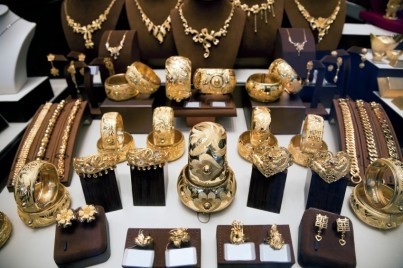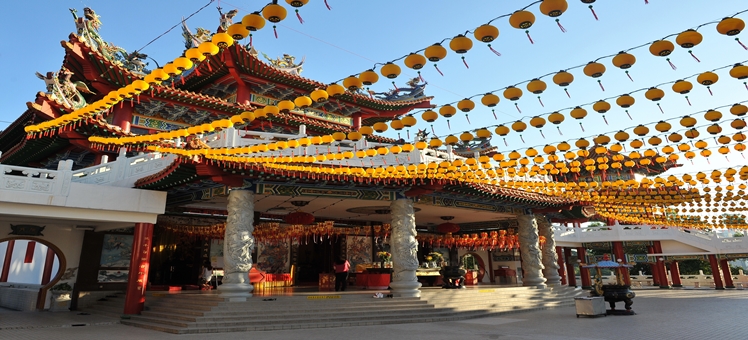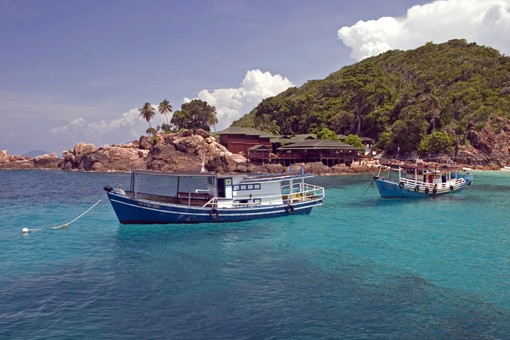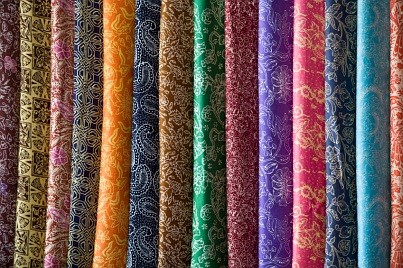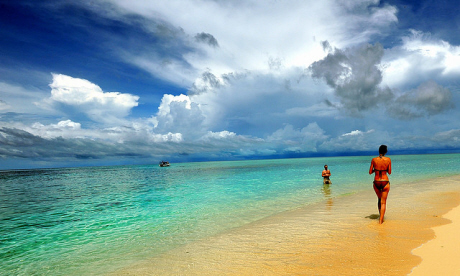
Beach and jungle combinations don't come better than this northern scoop of Malaysian Borneo - just don't forget your leech socks
“They won’t touch me,” Bambi said, amused, “because I’m a pirate.” Which was good news, given that I was sitting on an island surrounded by the Sulu Sea, the last remaining body of water notorious for its pirates. There was me, seven other tourists, the staff of Langkayan Island Dive Resort, the owner and his family. Oh, and the 12 armed soldiers and three policemen who were here to ensure we weren’t all kidnapped and ransomed by the Abu Sayyaf.
Bambi – the owner of Langkayan – contemplated the prospect of Filipino militants storming his island and chortled. People in the southern Philippines still remember, with loyalty, the role he played in ousting the Marcos regime. Between them and the neighbours from nearby Philippine islands, he’d be warned, he said, if the Abu Sayyaf planned anything here. In front of the decking on which we sat, juvenile black tip reef sharks nosed around in crystal clear floodlit shallows, looking for small fry to swallow. Bambi’s laughter spilled out into the night air and I found myself laughing too. Langkayan, at that moment, felt like the safest spot on the planet.
The Malaysian island of Langkayan lies off the east coast of Sabah, northern Borneo. It is a tropical paradise of pandan trees, braceleted by white sands and coral gardens, and is small enough to stroll around its perimeter in 15 minutes. Giant clams thrive in its waters and the coral hosts a bewildering variety of fish – damsel fish which seemed to be decked out in cocktail party finery with their long fins and tails like floaty chiffon, while the bizarre-shaped porcupine and puffer fish could have been straight off the set of Lost in Space.
That I saw the fish at all, in close-up, was due to Bambi, who knows an under-confident diver when he sees one. He therefore nominated himself to be my dive buddy. Three times a day, he guided me around pristine reefs by the fingertips, as if leading me around the ocean floor in a sub-aquatic waltz. En route, he pointed out a turtle grazing here, three bamboo shark sleeping under an overhang there. In between, a pride of lionfish. There was so much to see that I quite forgot to worry about having to breathe through my mouth.
Scuba diving here is a wildlife viewing experience that beats many others, and Sabah has plenty to choose from. Sea snakes? There’s a whole island of them. “Yes, they’re poisonous,” my guide said as the boat carried us to the small island of Pulau Ular. With some pride, he said, “They’re the most poisonous sea snakes in the world after the Australians’. They can’t bite you, though – their mouths are too small. And their teeth face backwards, so they can’t stick them into you. Unless,” he added, “it’s a very small bit of you, like an earlobe.” Reassured, I clambered out of the boat. I had no intention of sticking an ear anywhere near one of these sea kraits.
I was a bit concerned though, when my guide turned pale and started to quiver. He’d been told that the rock he was about to stand on had a sea krait nestling beneath it. And his sudden bolt for the boat did nothing to allay my fears. His hasty retreat made me nervous and I could see at least three krait under the stones between him and me. Maybe they went for toes too. I turned to the ranger who’d accompanied us to Snake Island and told him I wanted to go back to neighbouring Pulau Tiga, home of mud volcanoes and TV’s Survivors. I wanted a shot at surviving too.
So did Clementine, whom I encountered at Sepilok. Once, orang-utans could swing through the trees from one end of Borneo to the other without ever touching the ground. Not bad going, when you consider that Borneo is one of the world’s largest islands. Nowadays, logging has put paid to that. Each year, more primary forest is felled to make way for palm plantations as Malaysia tries to reclaim its position as the world’s greatest palm oil producer. Which is why the rehabilitation centre for orang-utans at Sepilok is so necessary. The young apes, orphaned by logging or rescued from illegal sales into pethood, have to learn how to survive in the wild before being reintroduced.
A crashing in the leaves heralded Clementine’s presence. Then in she swung, her baby gripping her chest as if by suction, a scrawny constellation of limbs and head against her mother’s red hair. Having landed on a fence at my elbow, she looked at me consideringly for a moment with large brown eyes, then stretched out a hand, just to touch. The impulse to reciprocate and enjoy a moment of contact was strong, but you can’t; their susceptibility to human viruses could have made it a fatal encounter. So I moved back slightly and watched her turn and head off to a feeding platform for fruit and milk. Nearby, pig-tailed macaques skulked in insouciant gangs like the Artful Dodger’s cohorts, ready to nip in and relieve the baby of its bananas.
This feeding platform is often used by mothers and babies. It seemed to work on the principle that, when you have childcare responsibilities, it helps if someone else can do the shopping occasionally. In fact, the jungle is like one vast supermarket, as I discovered when I camped in the high mountain rainforest that lies in the shadow of Mount Kinabalu. It’s crammed with fresh produce, together with a range of luxury goods that includes varieties of betel nut, tobacco and even cigarette papers, courtesy of a sweet-smelling yam leaf which lends itself to rolling your own. Of course, with most fruit ripening at canopy level, which could be as high as 50m up, it’s not exactly pick ’n’ mix. But there are favourite spots, normally under a rock overhang, where hunters will wait for days for fruit such as durian to fall to their feet.
Hiking through we snacked on liposu which, when the hard round shell is cracked open, offers the experience of a lemon-tasting lychee. The black, spiny clusters of torintid hide flesh as crisply tart as a Granny Smith apple. Our evening meal was turned into a gourmet feast on discovery of kadus – the largest edible mushroom to be found on the forest floor – near the camp.
But it wasn’t the variety of foodstuffs which astonished, so much as the natural pharmacy. There’s something here for every malady. If you have conjunctivitis, the sap of wodan – a thin, solid form of bamboo – will cure it fast. The juice of the labi-labi vine aids clotting and heals wounds quickly, as does the pith that sits between the stem and the bark of the taduron plant. And the bark of the tiga vine, when sliced and tucked between cheek and gum, enables you to drink as much alcohol as you like without getting drunk. Or so I’m told. It all filled me with a sense of wonder: not that these remedies exist, but that they’d been discovered at all. How many years of trial and error, of accumulated wisdom and oral tradition, have taught the Dusun people which plant is best suited to hunting or healing?
My three guides – Sadib, Maik and Johnny – were all Dusun, from Kiau, the nearby village which traditionally supplies the porters who have been the backbone of all attempts on the summit of Mount Kinabalu. Sir Hugh Low was the first to set off in 1851. Forty-two porters accompanied him then, carrying a range of necessities, including his toilet.
As Sadib took me through the forest, he told me about Mount Kinabalu and its place in local belief. “The summit is where Spirit rests,” he said. “It is the most spiritual place for us, the place where the Head Spirit is. In fact, Aki means Head and Nabalu means Spirit. When the British first came to the mountain, they asked us, ‘What do you call that?’ nodding at the mountain, and we said, ‘That is Aki Nabalu’. And they didn’t hear what we said. So it’s been ‘Kinabalu’ ever since.”
This part of the rainforest, which is traditional Dusun hunting ground, is also full of Spirit. “They are not the souls of dead people,” he explained to me, “They are simply Spirit. Other. And they are to be respected. As a boy, I’d come here with my grandfather to be taught how to hunt and, you know, as a boy, you do things, but my grandfather would say, ‘What did you do that for? Why did you catapult that stone at Spirit?’ I learned to do only what is necessary here.” He sliced a large leaf from a stem as he talked. “Here,” he said, “we even talk in a different language, because Spirit doesn’t like our everyday words”. Then he brought the folded leaf to his mouth and, softly, showed me how to make the call of a barking deer, so useful to the hunter. A sudden flurry in the canopy over to our right caught his attention and he pointed out a troupe of long-tailed macaques passing nearby.
I looked down. A leech was halfway through one of the breathable air holes in my boot. A minor gasp on my part and Johnny was there, pulling the leech out and plucking another off the back of my leg. It was my second day in the jungle and by that time I had completely surrendered my fashion sense. I was wearing plastic bags over my calves – fetching little numbers tied at the knee, tucked into my socks, and which rustled as I walked. The rain had been heavy and the leeches were “aggressive” according to Sadib. They cartwheeled across the ground, thin, thirsty, brown bits of stringy muscle.
“You know,” Sadib said, “the rain’s settled in.” His voice was very gentle. “There will be more leeches tomorrow. If you want, we could always go home?”
What, back to Kiau? I thought. And swap the pleasures of bathing in the icy torrent of the nearby stream for a modesty-wrestling exercise with a sarong in the backyard? Leave the jungle’s dusk cacaphony – frogs and cicadas carrying on like rival gangs competing to hold the noisiest party – and choose, instead, to be woken by a rooster? Say goodbye to bamboo crockery, eat at a table and play poker late into the night with the help of a gallon of coconut wine? I knew I was being a bit of a wimp, but I was overwhelmed by the tempting images that crowded my mind. “Yes, please,” I said.
As we hiked out, the rainforest slopes gave way to cleared land and the track was a narrow ribbon of terrace that ran alongside crops: tapioca, corn, rice, papaya, pineapple, tobacco. This was subsistence farming as it’s been practised for centuries. The daylight had a brightness that was suddenly dulled by mist. We were walking down, through and out of the clouds, back into a valley where the soil is tilled and bamboo pipework irrigates the slopes.
It was a fine way to come back down to earth.
